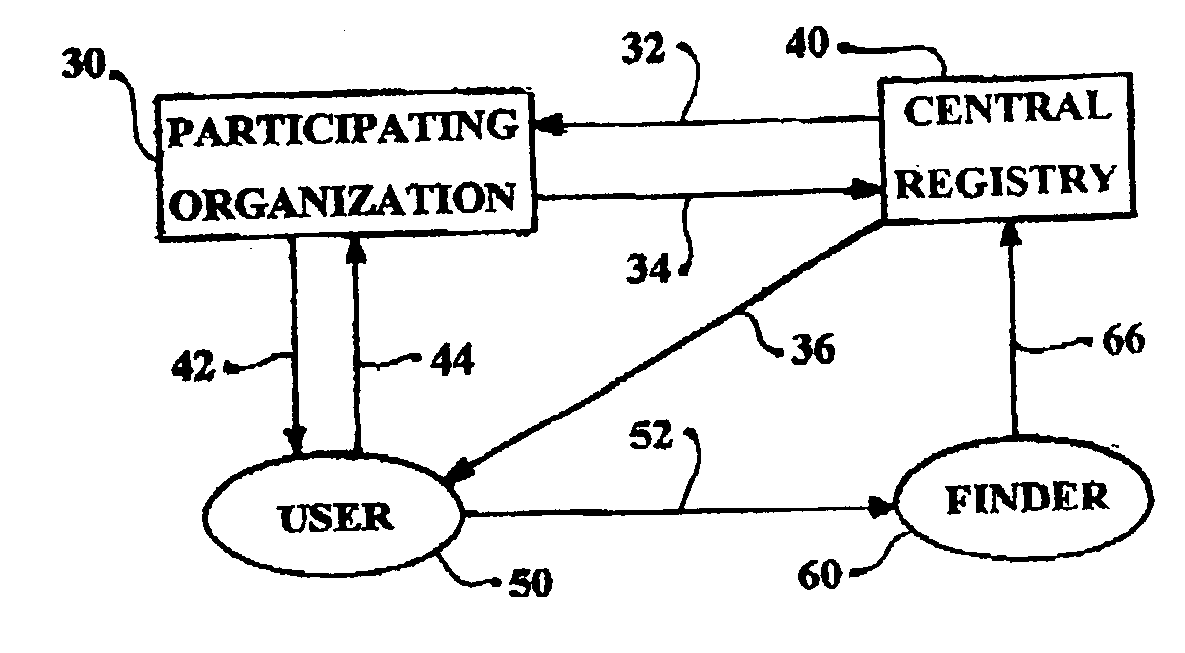Label system and method for returning lost articles
a label system and label technology, applied in the field of humanreadable identification devices, can solve the problems of inability to return lost items, inability to return items, and inability to meet the needs of the next item,
- Summary
- Abstract
- Description
- Claims
- Application Information
AI Technical Summary
Benefits of technology
Problems solved by technology
Method used
Image
Examples
Embodiment Construction
[0103]FIG. 1 is a diagram of the tag / label of the invention shown as a single record according to a first device embodiment of the present invention. Label 10 contains three fields of information: organization information 12, central registry contact information 14 and user identification 16. While for reasons of cost and ease of use, an adhesive label embodiment is the presently preferred embodiment and best mode now contemplated for carrying out the invention, there are numerous other embodiments of the invention. The device of the invention may be embodied has a tag or label which is human readable, electronically or physically machine readable, or a physical item which conveys the desired information, etc. Physical items may use tabs or notches for identity and may rely upon the central registry trademark or other indicia of the central registry for the convenient registry contact information. Braille lettering, lettering upon the device / tag / label or other human readable formats...
PUM
 Login to View More
Login to View More Abstract
Description
Claims
Application Information
 Login to View More
Login to View More - R&D
- Intellectual Property
- Life Sciences
- Materials
- Tech Scout
- Unparalleled Data Quality
- Higher Quality Content
- 60% Fewer Hallucinations
Browse by: Latest US Patents, China's latest patents, Technical Efficacy Thesaurus, Application Domain, Technology Topic, Popular Technical Reports.
© 2025 PatSnap. All rights reserved.Legal|Privacy policy|Modern Slavery Act Transparency Statement|Sitemap|About US| Contact US: help@patsnap.com



